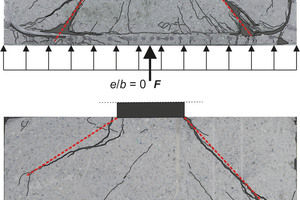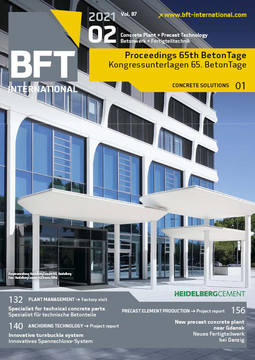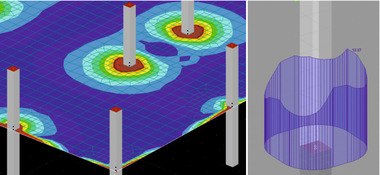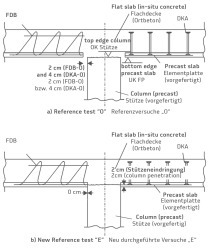Punching shear capacity of eccentrically loaded
column bases – Large-scale tests
The punching shear behavior of centrically loaded column bases has already been investigated extensively in the past. However, in civil engineering structures, uneven stress distributions due to unintended and planned load
eccentricities are often inevitable. This uneven shear stress distribution in column bases is considered by load-increasing factors on the action side in both the current Eurocode 2 and the draft of the next generation Eurocode 2. The limited experimental data do not allow for an
assessment of the economy and thus of the safety level of the design approaches for eccentrically loaded footings.
To close this gap, punching tests were carried out on large-scale reinforced concrete column bases systematically loaded with varying eccentricities. The experimental scheme consisted of twelve square footings with a slab thickness of h = 0.65 m, which were divided into two test series with different shear slendernesses but a constant u0/d-ratio. The uniaxial and biaxial eccentricities were applied by a new, fully automatic hydraulic system through a linearly variable soil
pressure distribution.
The increased punching shear resistance in comparison to the one-way shear resistance generally results from the confinement of the compression zone leading to the formation of a multiaxial concrete stress state in the form of a compression ring. New measuring methods are used to visualize this compression ring. The test results clearly show the influence of the increasing load eccentricity on the compression ring, the shape of the punching cone and the ultimate punching shear capacity. The presented eccentric punching tests show potential for optimizing the different design approaches in the future.








